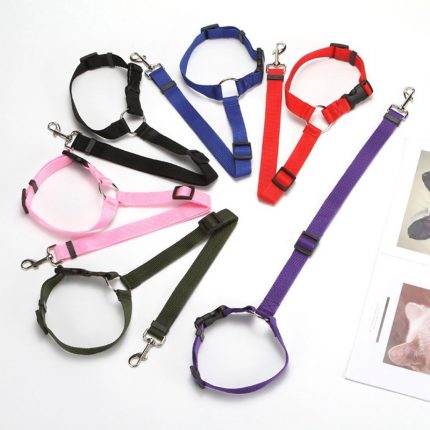Why Can I See My Dog’s Breath?
Have you ever noticed on a chilly morning or in the midst of winter, that when your dog exhales, you can see their breath? It’s a fascinating phenomenon that raises questions about the science behind it. While we humans are familiar with this occurrence, it’s intriguing to explore why our furry companions also exhibit this visible breath effect.
In this article, we will delve into the reasons behind why you can see your dog’s breath. We will explore the unique physiological characteristics of dogs that contribute to this phenomenon, as well as the environmental factors that play a significant role. Understanding the science behind why your dog’s breath becomes visible can not only satisfy your curiosity but also help you ensure your pet’s well-being during colder months.
Throughout history, dogs have adapted to various climates and environments alongside humans. Their ability to survive in different temperatures is a testament to their resilience and evolutionary traits. One such trait is the presence of a moist respiratory system, which is crucial to understanding why their breath becomes visible.
When dogs exhale, the warm air from their lungs meets the cooler surrounding air, causing a rapid decrease in temperature. This sudden drop in temperature causes the water vapor present in their breath to condense into tiny droplets, making it visible to the naked eye. Essentially, the same principle applies to why we can see our own breath on cold days.
Furthermore, the visibility of your dog’s breath is influenced by environmental factors such as humidity and temperature. In drier climates, where the air holds less moisture, the breath may not be as visible compared to more humid areas. Similarly, colder temperatures enhance the visibility of breath, as the contrast between warm exhaled air and the frigid air outside becomes more pronounced.
Understanding why you can see your dog’s breath is not only intriguing but also serves as a reminder to take appropriate precautions during colder seasons. Just like humans, dogs are susceptible to the effects of extreme cold. Monitoring their exposure to low temperatures and ensuring they have adequate shelter, clothing, and warmth is essential for their well-being.
In conclusion, the visibility of your dog’s breath is a result of the rapid temperature change when warm exhaled air meets the cooler surrounding air. This causes the water vapor in their breath to condense into visible droplets. Factors such as humidity and temperature also contribute to the visibility of breath. By understanding this phenomenon, you can better care for your furry friend and ensure their comfort and safety during colder periods.
The Science Behind Your Dog’s Visible Breath
Physiological Characteristics
Dogs possess unique physiological characteristics that contribute to why can I see my dog’s breath. One key factor is their respiratory system, which differs from humans in several ways. Dogs have a higher respiratory rate, meaning they inhale and exhale at a faster pace. This faster breathing cycle increases the amount of warm air expelled from their lungs, creating a greater contrast when it meets the cooler air outside, which is a primary reason behind why can I see my dog’s breath.
Additionally, dogs have a moist respiratory system. The lining of their respiratory tract contains moisture, which aids in the exchange of oxygen and carbon dioxide. When dogs exhale, this moist air carries water vapor, similar to human breath. As the warm, moist air encounters the colder external environment, it rapidly cools down, causing the water vapor to condense and become visible, which explains why can I see my dog’s breath.

The phenomenon of why can I see my dog’s breath is more noticeable in colder conditions. The contrast between the warm, moist air from the dog’s respiratory system and the cool air outside amplifies the visibility of their breath. Understanding these unique physiological traits of dogs provides insight into why can I see my dog’s breath, highlighting the differences between canine and human respiratory systems and how these differences manifest in the visible breath of dogs.
Environmental Factors
The question of “why can I see my dog’s breath” can be intriguing, especially when observed under various environmental conditions. The visibility of your dog’s breath is primarily influenced by factors such as humidity and temperature, which play a significant role in this phenomenon.
When pondering “why can I see my dog’s breath,” consider the role of humidity first. In areas with higher humidity levels, the air is already saturated with moisture, making it more challenging for the additional water vapor from your dog’s breath to condense and become visible. This explains why, in humid climates, you might less frequently find yourself asking, “why can I see my dog’s breath?” Conversely, in drier climates, where the air contains less moisture, the question of “why can I see my dog’s breath” becomes more relevant, as the breath is more likely to condense and be visible due to the lower humidity levels.
Moreover, temperature is crucial when addressing “why can I see my dog’s breath.” On colder days, the stark temperature contrast between the warm exhaled air from your dog and the cold ambient air accelerates the condensation of water vapor, making the breath visibly more pronounced. This phenomenon is what often leads to the question, “why can I see my dog’s breath,” during the winter or in colder climates. In extremely cold temperatures, this effect is even more striking, as the breath may freeze into tiny ice crystals, presenting a fascinating spectacle and further prompting the question of “why can I see my dog’s breath.”
Understanding the interplay between humidity, temperature, and the condensation of water vapor can help demystify the common curiosity of “why can I see my dog’s breath.” Whether it’s the humid air preventing the visibility of breath or the cold air accentuating it, these environmental factors are key to answering the question of “why can I see my dog’s breath.”
Caring for Your Dog in Cold Weather
Understanding why you can see your dog’s breath is not only interesting but also has practical implications for their well-being, particularly during colder seasons. Dogs, like humans, can be susceptible to the effects of extreme cold. It is essential to take appropriate measures to ensure their comfort and safety.
Providing adequate shelter is crucial during cold weather. Ensure that your dog has a warm and insulated space to retreat to, such as a cozy dog house or a designated area inside your home. Additionally, consider using blankets or bedding to provide extra warmth and insulation.

Clothing can also help protect your dog from the cold. Certain breeds, such as short-haired or smaller dogs, may benefit from wearing dog sweaters or jackets to retain body heat. However, it is important to choose clothing that fits properly and does not restrict their movement or cause discomfort.
Regular exercise is essential for dogs, but during colder months, it’s important to be mindful of the weather conditions. Limit outdoor activities during extreme cold snaps or when there are strong winds. Instead, opt for shorter walks or engage in indoor activities to keep your dog active and entertained.
Lastly, be attentive to signs of discomfort or distress in your dog during cold weather. Watch for shivering, reluctance to go outside, or excessive licking of paws, as these may indicate that they are too cold. If you suspect your dog is experiencing discomfort, consult with your veterinarian for further guidance.
Conclusions
In conclusion, observing your dog’s breathing and sleep patterns is crucial for their overall health. If you’re wondering, “why can I see my dog’s breath,” it may be a sign of various conditions or simply a result of environmental factors such as cold weather. For a deeper understanding of this phenomenon and how it relates to your dog’s health, visit geepets.com where we explore the intricacies of canine respiratory health.
Additionally, for more comprehensive insights into canine care and health issues, the American Kennel Club (akc.org) offers a wealth of resources that can help you ensure your furry friend is happy, healthy, and breathing comfortably. Remember, if you notice any unusual signs in your dog’s breathing patterns, it’s always best to consult with a veterinarian for professional advice and peace of mind.
Practical Recommendations for Caring for Your Dog’s Well-being
1. Providing Adequate Shelter
Ensure your dog has a warm and insulated shelter to protect them from the cold, which is particularly important if you’ve ever wondered, “why can I see my dog’s breath?” This phenomenon is a clear indicator of cold temperatures affecting your pet. Consider investing in a well-insulated dog house or create a designated area inside your home where your dog can retreat to when the temperatures drop, addressing the concern behind “why can I see my dog’s breath?”
Make sure the shelter is elevated off the ground to prevent cold drafts, a measure that directly contributes to reducing instances where you find yourself asking, “why can I see my dog’s breath?” Additionally, provide bedding or blankets for extra warmth, ensuring the question of “why can I see my dog’s breath?” is more about the natural occurrence in cold air rather than a worry about your dog’s comfort and warmth.
2. Dressing Your Dog for the Weather
For dogs that are more susceptible to the cold, such as short-haired or smaller breeds, consider using dog sweaters or jackets to provide additional insulation. When you find yourself asking, “why can I see my dog’s breath,” it’s a clear indicator that the temperature is dropping to the point where even your dog’s breath becomes visible, signaling that it might be time to assess their cold-weather gear. Choose clothing that fits properly and does not restrict their movement, ensuring they are comfortable even in colder climates.

This consideration is especially important if you’ve noticed the phenomenon of “why can I see my dog’s breath,” as it highlights the need for extra warmth. Remember, not all dogs require clothing, so assess your dog’s individual needs based on their breed, size, and tolerance to cold. If the question “why can I see my dog’s breath” comes up frequently during walks or time spent outdoors, it might be a sign that your dog could benefit from additional layers to maintain a comfortable body temperature.
3. Limiting Exposure to Extreme Cold
During extremely cold weather, it’s crucial to limit your dog’s time outdoors, not only because of the discomfort but also because you might wonder, “why can I see my dog’s breath?” This visible breath is a clear sign of the freezing temperatures affecting them. Strong winds and freezing temperatures can be dangerous for your furry friend, emphasizing the question, “why can I see my dog’s breath?” even more. This phenomenon is a reminder of the harsh conditions outside. Opt for shorter walks or engage in indoor activities to keep them active and entertained, which also reduces the moments you find yourself asking, “why can I see my dog’s breath?” during those brief outdoor excursions.
If you do take them outside, consider using dog booties to protect their paws from freezing surfaces and potential chemical irritants like de-icing agents, which can also contribute to the conditions that make you ponder, “why can I see my dog’s breath?” These protective measures not only keep their paws safe but also minimize the cold’s impact, making the sight of your dog’s breath in the cold air a less frequent concern. Always keep in mind, the safety and comfort of your dog during cold weather are paramount, and noticing details like why you can see your dog’s breath can be an important indicator of their well-being.
4. Monitoring Signs of Discomfort
Be attentive to signs of discomfort or distress in your dog during cold weather. Shivering, reluctance to go outside, or excessive licking of paws may indicate that they are too cold. If you notice these signs, or if you find yourself wondering, “why can I see my dog’s breath,” it could be a clear indication that the temperatures are affecting them. Seeing your dog’s breath as a visible mist in the cold air is normal, but it also serves as a reminder to assess their comfort and safety in such conditions. If the question “why can I see my dog’s breath” comes to mind, it’s a prompt to bring them indoors to warm up.
The sight of your dog’s breath in the cold, coupled with other signs of discomfort, should not be overlooked. Whenever you ask yourself, “why can I see my dog’s breath,” and notice other symptoms of being too cold, it’s time to act by providing warmth and possibly consulting with your veterinarian for further guidance. This proactive approach ensures your pet’s well-being during the chillier months, keeping the thought of “why can I see my dog’s breath” as just an observation rather than a concern.
5. Maintaining a Healthy Diet and Hydration
A well-balanced diet is essential for your dog’s overall health, including their ability to regulate body temperature, which can be crucial if you’re wondering why can I see my dog’s breath. Ensure they are receiving proper nutrition and consult with your veterinarian if you have any concerns, especially if the question of why can I see my dog’s breath arises.
Our featured products:
This could be a sign of your dog’s body working to regulate its temperature. Additionally, ensure your dog has access to fresh water at all times, as staying hydrated helps regulate their body temperature. Hydration is key not only for temperature regulation but also if you’re concerned about why can I see my dog’s breath. It’s a natural phenomenon, especially in cooler conditions, but ensuring they’re well-hydrated can aid their overall health and comfort. If the question of why can I see my dog’s breath becomes a frequent concern, it might also be an indicator to reassess their diet and hydration levels to ensure they’re optimal for your dog’s health and wellbeing.
6. Regular Veterinary Check-ups
Schedule regular veterinary check-ups to monitor your dog’s health, especially during colder months. Your veterinarian can provide specific advice tailored to your dog’s breed, age, and overall health condition. They can also advise on any necessary vaccinations or preventive measures to keep your dog healthy and protected during the winter season.
By following these practical recommendations, you can help ensure your dog’s well-being and keep them comfortable during colder periods. Remember, each dog is unique, so it’s important to assess their individual needs and adjust your care accordingly. With proper attention and care, you can enjoy the winter season with your furry companion while keeping them safe and warm.















